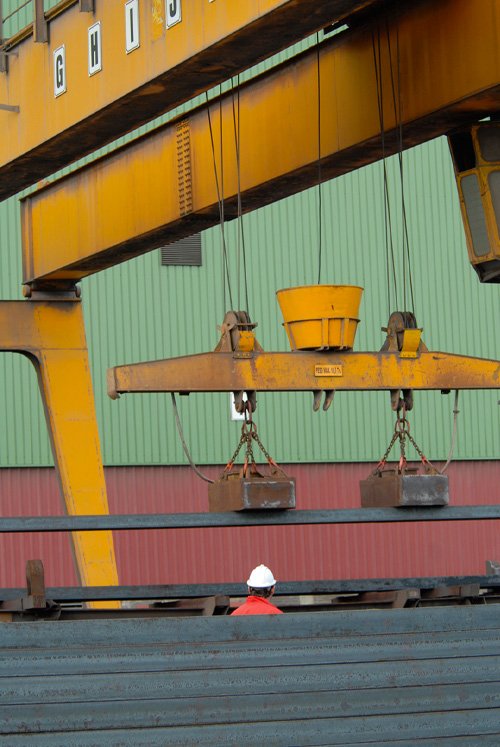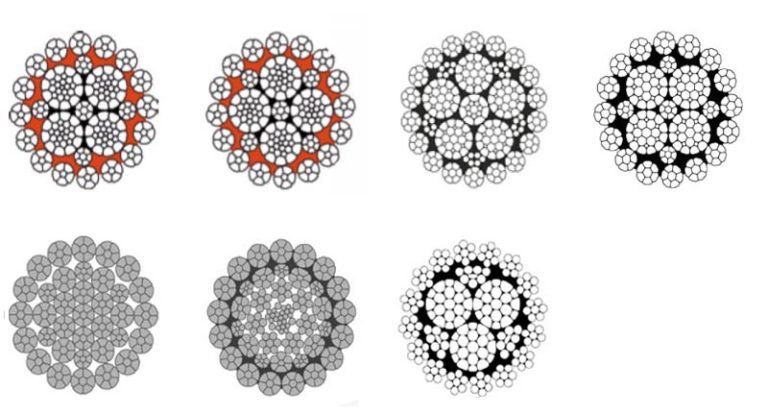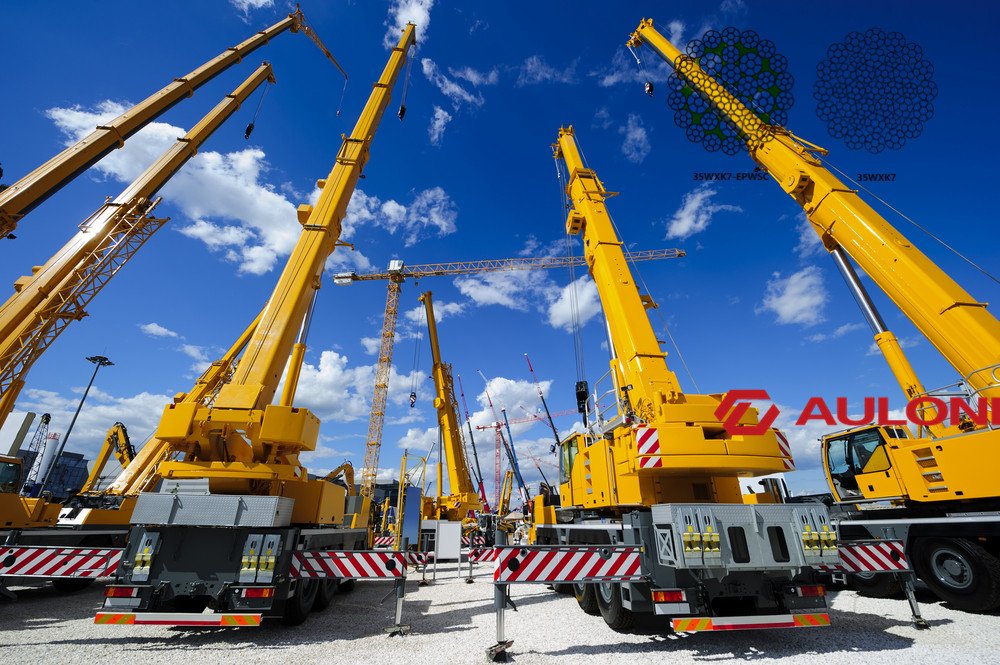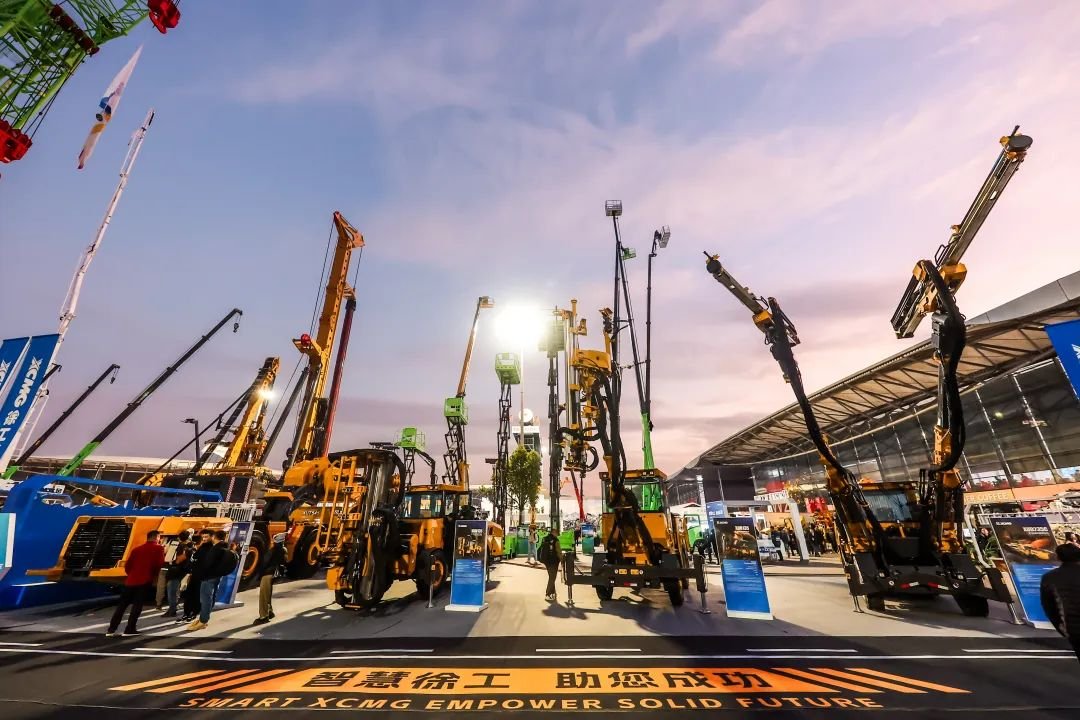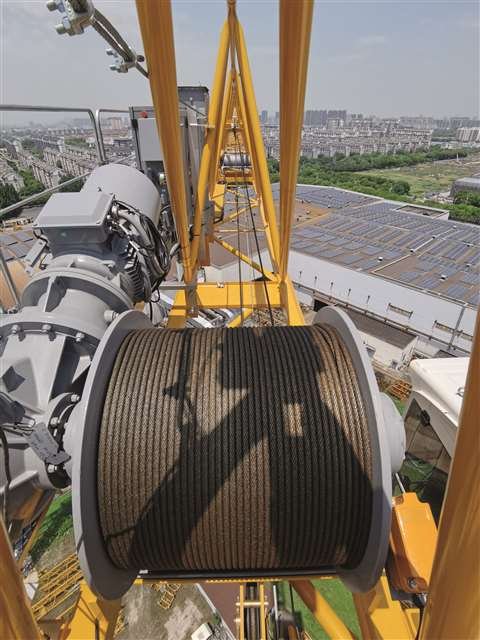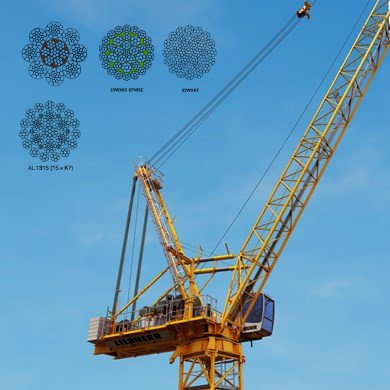Choosing the wrong wire rope for a crane feels like a ticking time bomb. A failure is not just an equipment issue; it’s a major safety hazard that can halt your entire operation.
The most common types of wire ropes used on cranes are rotation-resistant ropes, particularly constructions like 19×7 and 35×7. These are chosen for their high strength and ability to prevent load spinning during lifting operations.
I remember standing on a site once, watching a massive load begin to spin uncontrollably mid-air. The operator was skilled, but the rope was wrong for the job. That moment taught me a lesson that specifications on paper have real-world consequences.
How Do I Choose the Right Crane Wire Rope Specification?
Selecting the right rope can feel overwhelming with all the options available. But breaking it down into key factors makes the process much clearer and ensures you get what you need.
To choose the right crane rope, you must consider four key factors: the rope’s diameter, its construction (like 6×36 or 19×7), its core type (Fiber Core or Steel Core), and its lay direction.
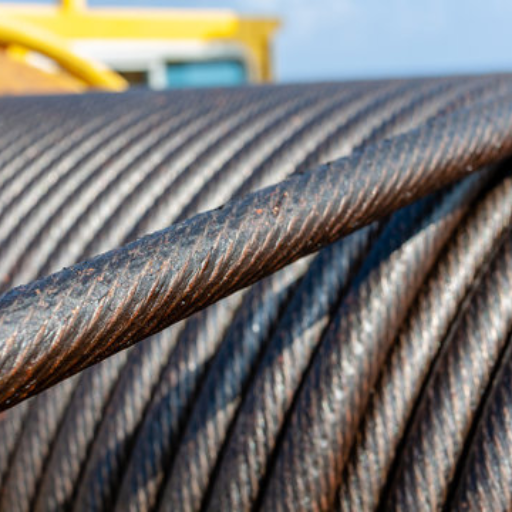
Let’s dive deeper into what each of these specifications means for your crane’s performance and safety. It’s not just about picking a rope that fits; it’s about understanding how these elements work together.
Understanding Wire Rope Construction
The construction of a wire rope refers to how many strands it has, and how many wires make up each strand. This is the basic building block of its performance. For example, a 6×19 construction means there are 6 strands, and each strand is made of 19 wires. Different constructions offer different balances between fatigue resistance and abrasion resistance.
| Construction | Characteristics | Best For |
|---|---|---|
| 6×19 Class | Good abrasion resistance, less flexible. | Applications with dragging or scraping. |
| 6×36 Class | High flexibility, good fatigue resistance. | Hoisting applications on many types of cranes. |
| Rotation-Resistant | Multi-layer, designed to resist spinning. | Single-line hoisting on tower or mobile cranes. |
Choosing the right construction is a trade-off. A rope with many small wires (like 6×36) will be more flexible and resistant to bending fatigue. A rope with fewer, larger wires (like 6×19) will be more resistant to abrasion and crushing.
The Core of the Matter: FC vs. IWRC
The core is the heart of the wire rope. It supports the outer strands and provides stability. The two main types are Fiber Core (FC) and Independent Wire Rope Core (IWRC).
| Core Type | Description | Advantages | Disadvantages |
|---|---|---|---|
| Fiber Core (FC) | A core made from natural or synthetic fibers like polypropylene. | More flexible, elastic. | Easily crushed, lower strength. |
| IWRC (Steel Core) | A separate wire rope that runs through the center. | High strength, resists crushing, heat resistant. | Less flexible than FC. |
For most crane hoisting applications, an IWRC is the standard choice. Its strength and crush resistance are critical when the rope is spooled onto a drum under high tension. From my experience in the factory, about 80% of crane ropes we produce are IWRC.
Lay Direction: Regular Lay vs. Lang Lay
The lay describes the direction the wires are twisted to form a strand, and the direction the strands are twisted around the core.
| Lay Type | Description | Key Feature | Common Use |
|---|---|---|---|
| Regular Lay | Wires are laid in the opposite direction to the strands. | Good crush resistance, stable. | General purpose applications. |
| Lang Lay | Wires are laid in the same direction as the strands. | Excellent fatigue resistance, flexible. | Crane hoisting where both ends are fixed. |
A Lang lay rope has better fatigue life, but it has a tendency to unwind, so it’s not suitable for single-part lifts with a swivel. Regular lay is more stable and is a safer general choice if you’re unsure.
Finish: Bright, Galvanized, or Plastic Impregnated
The finish of the wire rope protects it from the environment.
| Finish Type | Description | Primary Benefit |
|---|---|---|
| Bright | Uncoated steel, lubricated for basic protection. | Lowest cost. |
| Galvanized | Coated with a layer of zinc for corrosion resistance. | Good for damp or marine environments. |
| Plastic Impregnated | Plastic fills the spaces between strands. | Seals in lubricant, maximum corrosion and fatigue protection. |
We are seeing more and more clients in places like Singapore and Australia request galvanized or even plastic impregnated ropes. The upfront cost is higher, but the extended service life in humid or salty air often makes it a smarter long-term investment.
What Makes Rotation-Resistant Wire Rope Special for Cranes?
Have you ever seen a heavy object start to spin wildly at the end of a single crane line? This is a dangerous situation caused by the rope’s natural tendency to un-twist under load.
Rotation-resistant wire rope is specially constructed with multiple layers of strands laid in opposite directions. This counter-acts the rope’s torque, preventing the load from spinning and making it essential for single-line hoisting.
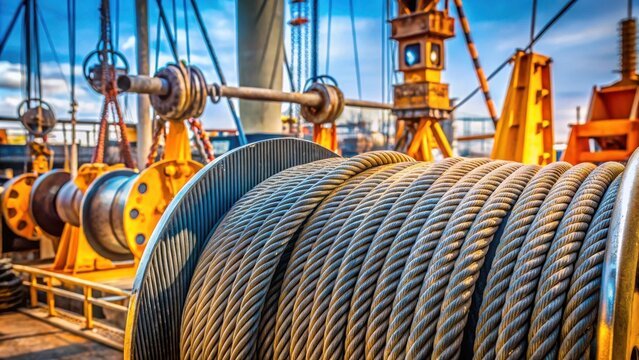
This type of rope is a feat of engineering. It’s not just one rope; it’s several ropes working together in one package. Understanding how it works shows why it’s a non-negotiable for many modern cranes.
How Does Rotation Resistance Work?
Imagine a standard wire rope. As you add weight, the strands want to unwind, like a twisted rubber band. This creates torque, which makes the load spin.
A rotation-resistant rope has an inner core of strands laid in one direction. Then, it has one or more outer layers of strands laid in the opposite direction. When a load is applied, the inner core wants to twist one way, and the outer layers want to twist the other way. These opposing forces cancel each other out. The result is a stable rope with very little torque, keeping the hook and the load steady.
Common Rotation-Resistant Constructions
Not all rotation-resistant ropes are created equal. They are classified based on the number of strands and their design. Our factory produces several types to meet specific lifting needs.
| Construction | Class | Key Characteristics | Typical Application |
|---|---|---|---|
| 19×7 | Rotation-Resistant | Good resistance to rotation. The industry standard for many years. | Mobile cranes, smaller tower cranes. |
| 35×7 | Non-Rotating | Superior resistance to rotation, very high strength. | Deep shaft mining, offshore cranes, large tower cranes. |
| Compacted | Strands are flattened for a smoother surface. | Higher breaking load, better drum spooling, improved fatigue life. | High-demand applications requiring maximum performance. |
The move towards a 35×7 class rope for demanding jobs is something I’ve seen grow over the last decade. It provides an extra margin of safety and performance that purchasing managers for large mining or construction companies really value.
When to Use Rotation-Resistant Rope
It is crucial to use rotation-resistant rope in any application where the load is suspended from a single line and is not guided. If the load is free to rotate, it will.
Common scenarios include:
- Tower Cranes: The main hoist line is almost always a single fall.
- Mobile Cranes: When using the main hook without a multi-part block.
- Overhead Cranes: For single-line grabs or magnets.
- Mining Hoists: Lifting workers and materials from deep shafts.
Using a standard 6-strand rope in these situations is a serious safety risk. The rope can un-strand itself, lose a huge amount of strength, and fail catastrophically.
Why is EN 12385-4 Compliance So Important for Crane Ropes?
When you buy a critical component like a crane rope, you need to trust it. Standards exist to create a baseline of trust and quality, ensuring everyone is on the same page about safety.
EN 12385-4 is the harmonized European standard for steel wire ropes used on cranes. Compliance means the rope meets strict requirements for strength, dimensions, and manufacturing quality, ensuring its safety and reliability for lifting operations.
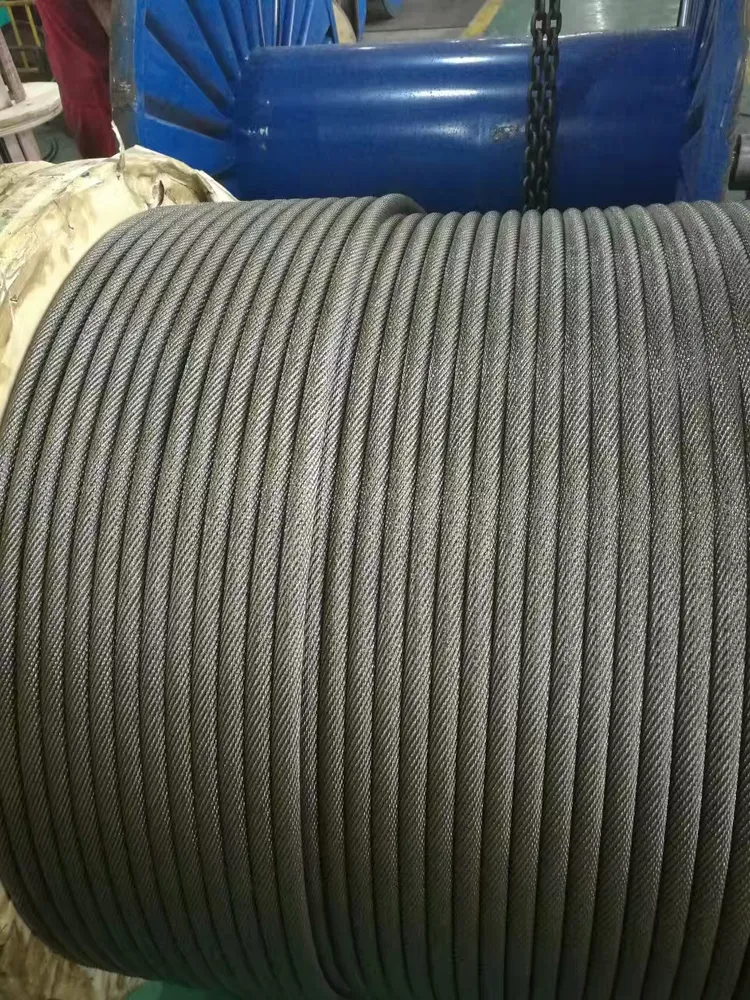
In our factory, every batch of crane rope we produce is tested to meet or exceed these standards. It’s not just about passing a test; it’s about our commitment to the safety of the people who will use our products.
What Does EN 12385-4 Specify?
This standard is very detailed. It covers all the critical aspects of the rope’s design and performance. It removes guesswork and ensures that a rope from one compliant manufacturer has comparable safety an quality to another.
| Specification Area | What it Covers | Why it Matters |
|---|---|---|
| Materials | The chemical composition and quality of the steel wire. | Ensures the base material is strong and free of defects. |
| Construction | Allowable rope constructions for crane applications. | Guarantees the rope is designed for lifting. |
| Diameter Tolerances | The maximum and minimum allowable diameter for a given size. | Ensures the rope fits correctly in sheaves and drums. |
| Minimum Breaking Force | The minimum force the rope must withstand before breaking. | This is the most critical safety metric. |
| Lubrication | Requirements for factory lubrication. | Protects the rope from internal friction and corrosion. |
This standard is the rulebook for crane rope manufacturing in Europe and is respected globally.
The Value of Certification
Having a certificate isn’t just a piece of paper. It’s proof. It’s your assurance that the product you are buying has been independently verified to meet the highest safety standards. For a purchasing manager, this is crucial for managing risk and liability.
I once worked with a client in Russia who was bidding on a major government infrastructure project. They needed RMRS (Russian Maritime Register of Shipping) certification. Because we had the systems in place to provide this type of third-party certificate, they were able to win the contract. We can provide several key certifications if a client needs them.
- CE (European Conformity)
- BV (Bureau Veritas)
- DNV (Det Norske Veritas)
- ABS (American Bureau of Shipping)
- RMRS (Russian Maritime Register of Shipping)
These certifications demonstrate a commitment to global quality standards.
How Compliance Protects You
Imagine two ropes that look identical. One is fully compliant with EN 12385-4 and certified. The other was made at a factory with no quality control. The compliant rope has a guaranteed minimum breaking load. The other one might be 10%, 20%, or even 30% weaker than it should be. You cannot see the difference until it is too late. Using compliant, certified rope is your best insurance against catastrophic failure.
Can a Plastic Impregnated Wire Rope Improve Crane Performance?
In harsh environments, a standard wire rope fights a constant battle against dirt, moisture, and internal friction. There is a technology that helps it win this battle: plastic impregnation.
Yes, a plastic impregnated wire rope dramatically improves performance. The plastic locks in essential lubrication and creates a barrier against grit and moisture, significantly increasing the rope’s fatigue life and resistance to corrosion.
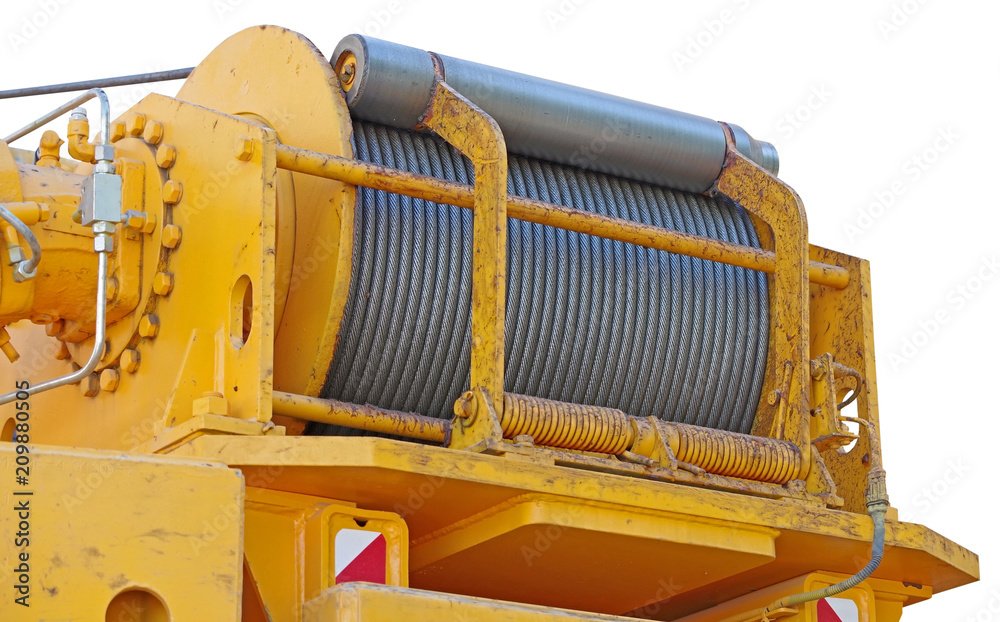
It’s an advanced feature, but for certain applications, the return on investment is massive. We’ve seen these ropes last two or three times longer than standard ropes in tough conditions.
Benefits of Plastic Impregnation (PI)
The process involves extruding a layer of specialized plastic into the rope itself, filling the internal spaces between the strands. This creates a powerful protective shield from the inside out.
| Benefit | How it Works | The Result |
|---|---|---|
| Extended Service Life | The internal lubricant is sealed in and cannot escape. | The rope’s core remains lubricated, dramatically reducing internal friction and fatigue. |
| Internal Corrosion Resistance | Moisture and corrosive agents cannot penetrate the rope’s core. | Prevents hidden rust and degradation, which can destroy a rope from within. |
| Structural Stability | The plastic cushion supports the strands, reducing internal wire breaks. | The rope maintains its shape and strength for longer, especially on multi-layer drums. |
| Abrasion Resistance | The plastic provides a smooth, protective layer between the strands. | Reduces wear and tear as the strands move against each other under load. |
When is Plastic Impregnation Worth the Investment?
This technology shines brightest in the toughest environments. While it carries a higher upfront cost, it is often the most economical choice for industries where downtime is extremely expensive.
Consider PI ropes for:
- Marine & Offshore Applications: Constant exposure to salt spray and humidity. Galvanized rope with PI offers the ultimate protection. Many of our clients in Indonesia and Vietnam choose this.
- Mining Operations: Abrasive dust and moisture are a constant threat, both above ground and in shafts.
- Heavy Industrial Cranes: In steel mills or foundries where the rope is subjected to intense use and abrasive particles.
Comparing Costs: Upfront vs. Lifetime
A purchasing manager might look at the price of a PI rope and compare it to a standard bright-finish rope. The PI rope will be more expensive. However, this is a short-sighted view.
Think about the total cost of ownership.
- Rope Cost: Higher for PI.
- Replacement Frequency: Much lower for PI. A rope that lasts twice as long cuts your rope costs in half over time.
- Downtime Cost: This is the big one. How much does it cost your operation every hour that a crane is down for a rope change? For most companies, this is thousands of dollars.
When you factor in reduced downtime and fewer replacements, the PI rope is often the cheaper option in the long run.
What are the Critical Signs of Wire Rope Wear and When Should I Replace It?
All wire ropes are consumable items. They have a finite service life. The most important job for any crane owner or operator is to know when that service life is over.
You must replace a wire rope immediately if you find a high concentration of broken wires, a diameter reduction of 5% or more in the main body, significant corrosion, or physical damage like kinking, crushing, or heat damage.
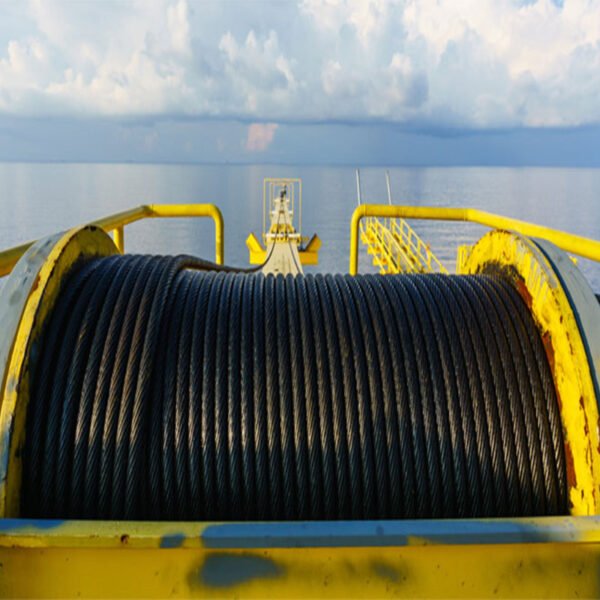
Ignoring these signs is gambling with safety. A thorough and regular inspection program is not optional; it is an essential part of responsible crane operation. I cannot stress this enough.
The Main Culprits of Rope Degradation
Wear doesn’t just happen in one way. You need to know what to look for. During my factory inspections, we learn to spot these signs from a distance.
| Wear Type | Description | What to Look For |
|---|---|---|
| Broken Wires | Individual wires snapping due to bending fatigue or damage. | “Valley” breaks occur between strands; external breaks are visible on the crown. Note the number of broken wires in one rope lay. |
| Diameter Reduction | The rope’s diameter gets smaller due to external wear or core failure. | Use calipers to measure the rope. A sudden reduction is a red flag for core failure. |
| Corrosion | Rust and pitting on the wire surface. | Red dust is a sign of internal corrosion. External rust is also a serious warning. |
| Deformation | Physical damage to the rope’s shape. | Kinking, crushing, bird-caging, or areas that have been flattened on the drum. |
A Practical Inspection Checklist
Regular inspections should be a part of your daily routine. Here is a simple checklist you can use.
| Inspection Point | Check For | Action if Found |
|---|---|---|
| Full Length of Rope | Kinks, crushed sections, “bird-caging,” heat damage. | Immediately remove the rope from service. |
| Wire Crowns | External wear, abrasion, a “flat” appearance. | Measure diameter. If reduced beyond limits, replace. |
| Between Strands | Red dust (internal corrosion), broken wires. | Indicates serious internal degradation. Replace the rope. |
| End Attachments | Cracks, wear, or distortion in sockets or swages. | The attachment is as critical as the rope. Replace if damaged. |
| Measurement | Diameter in at least three places, 120 degrees apart. | Compare to nominal diameter. Replace if loss exceeds 5-7% (check regulations). |
Don’t Risk It: The Cost of Procrastination
I once got a call from a potential customer. They had a rope fail, and it caused a small accident. Luckily, nobody was hurt. When they sent me photos of the failed rope, it was clear it should have been replaced months earlier. It was badly corroded and had dozens of broken wires. They were trying to “get a little more life out of it” to save money. That decision ended up costing them ten times more in repairs and downtime than a new rope would have. Never make that trade.
Conclusion
Choosing the right crane rope requires a clear understanding of construction, cores, standards, and wear signs. Safety and performance depend on getting these details right every single time.

